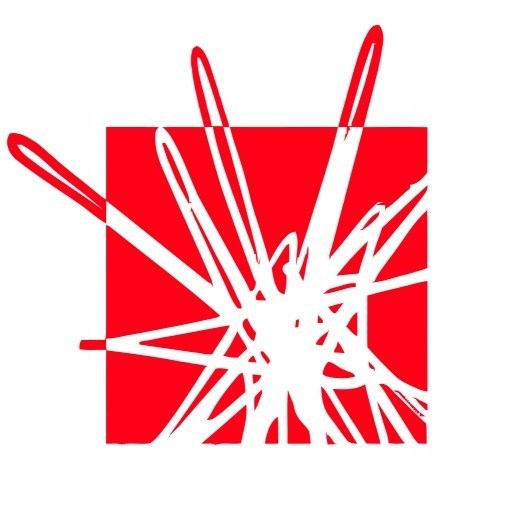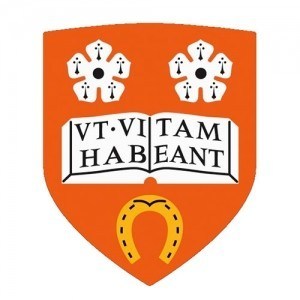Photos of university / #unibirmingham
Embedded Systems with Industrial Studies is a comprehensive undergraduate program offered by the University of Birmingham designed to equip students with the fundamental knowledge and practical skills necessary for a successful career in embedded systems engineering and industrial applications. This course combines rigorous training in electronics, computer engineering, and software development with a strong emphasis on real-world industrial practices, preparing graduates to work effectively in leading technology companies, manufacturing industries, and research environments. Throughout the program, students explore core topics such as digital and embedded system design, real-time operating systems, communication protocols, sensors, actuators, and hardware integration. In addition, modules in power electronics, microcontroller programming, and firmware development provide hands-on experience that bridges theoretical understanding with practical application.
A distinctive feature of the course is the industrial studies component, which immerses students in real-world engineering environments, fostering a deep understanding of manufacturing processes, quality assurance, and industrial standards. Students undertake placements or collaborative projects with industry partners, gaining valuable insights into project management, teamwork, and operational challenges faced by modern industry. The program also emphasizes critical skills such as problem-solving, analytical thinking, and innovation, preparing students to address evolving technological demands.
The curriculum is supported by state-of-the-art laboratories and research facilities, enabling students to undertake complex projects and prototypes, and to develop expertise in embedded software development, circuit design, and system integration. Graduates of the program will be well-positioned to pursue careers in embedded system design, automation, robotics, automotive electronics, healthcare devices, and IoT applications. Alternatively, they can continue their studies at postgraduate level or engage in research activities. Combining technical proficiency with industrial experience, Embedded Systems with Industrial Studies at the University of Birmingham offers a rigorous and dynamic learning environment designed to produce industry-ready engineers equipped to shape the future of embedded technology.
The Embedded Systems with Industrial Studies undergraduate program at the University of Birmingham offers students a comprehensive education in designing, developing, and implementing embedded systems across various industries. Throughout the course, students gain a deep understanding of the fundamental principles of embedded computing, including hardware design, firmware development, and real-time operating systems. The program emphasizes hands-on learning, providing access to state-of-the-art laboratories and industry-standard tools to ensure students acquire practical skills that are directly applicable in the workplace.
A key feature of this degree is the integration of industrial placements, which enable students to gain valuable work experience and develop an understanding of the commercial environment in which embedded systems are deployed. These industrial studies are designed to complement academic coursework, offering students the opportunity to work on real-world projects, collaborate with industry professionals, and build a professional network that can be advantageous upon graduation.
Core modules cover topics such as computer architecture, microcontrollers, sensor interfacing, power management, communication protocols, and software engineering for embedded systems. The program also explores advanced areas such as IoT (Internet of Things), aerospace, automotive electronics, and robotics, reflecting the diverse applications of embedded technology in modern industry.
Students are encouraged to undertake independent research and are supported by academic staff who are specialists in embedded systems engineering. The program culminates in a substantial final-year project, often in partnership with industry, where students demonstrate their ability to solve complex technical challenges.
Graduates of this program will be well-equipped to pursue careers in embedded systems design, hardware and software development, and industrial automation. Employers value the combination of technical expertise, practical experience, and industry awareness that this program fosters, making graduates highly competitive in the job market. Additionally, the program provides a solid foundation for those interested in further study, including master's and doctoral research in embedded systems and related fields.
The Embedded Systems with Industrial Studies program at the University of Birmingham requires applicants to possess a strong background in mathematics and physics at the secondary education level. Prospective students should have achieved high grades in these subjects, demonstrating analytical and problem-solving skills necessary for technical coursework. A good proficiency in English is essential, with applicants typically needing an IELTS score of at least 6.0 overall, with no individual component below 5.5, or equivalent evidence of English language competence. The program particularly values applicants with prior experience in electronics, programming, or systems design, which may be demonstrated through relevant coursework or practical projects. While there are no specific prerequisites regarding prior college-level coursework, applicants with existing qualifications in electrical engineering, computer science, or related fields are considered advantageous.
International students are encouraged to provide a visa status demonstrating eligibility for study in the UK, and should ensure compliance with immigration requirements. The program’s application process involves submission through the university’s application portal, accompanied by personal statements outlining motivation and interest in embedded systems and industrial applications. Supporting documents such as academic transcripts, references, and English language certificates are required. The program emphasizes hands-on learning, so prior familiarity with hardware and software development environments can be beneficial.
Applicants should also demonstrate an ability to work effectively both independently and within team settings, as the coursework includes collaborative projects and industrial placements. The university looks for indicators of critical thinking, innovation, and technical curiosity in prospective students. For mature students or those with non-traditional educational backgrounds, relevant work experience in the technology sector may be considered as part of the application. The program aims to develop graduates capable of designing, developing, and maintaining embedded systems for industrial environments, combining theoretical knowledge with practical skills. Meeting these requirements ensures that students are well-prepared to succeed in the demanding and dynamic field of embedded systems engineering within industrial applications.
The Embedded Systems with Industrial Studies BSc program at the University of Birmingham offers a diverse range of financing options to support its students throughout their academic journey. The university provides a variety of scholarships, bursaries, and financial aid schemes designed to assist both domestic and international students in managing their tuition fees and living costs.
For UK students, the university participates in government-funded schemes such asالبحث عن المنح الدراسية والتمويل الحكومي، حيث يمكن للطلاب التقدم للحصول على منحة دراسية أو قرض دراسي، والذي يمكن أن يغطي جزءاً من تكاليف الدراسة. بالإضافة إلى ذلك، تقدم الجامعة منحًا خاصة للطلاب المتفوقين أكاديميًا، والتي تعتمد على الأداء الأكاديمي السابق ونتائج الاختبارات الموحدة. توجد أيضًا برامج منح تمويلية موجهة للطلاب من خلفيات متنوعة، بهدف تعزيز التنوع وتحقيق المساواة في الفرص التعليمية.
بالنسبة للطلاب الدوليين، تقدم الجامعة مساعدة مالية خاصة من خلال منح دولية، التي تهدف إلى دعم الطلاب القادمين من خارج المملكة المتحدة. تتطلب هذه المنح عادةً تقديم طلب مستقل، وقد يتم تحديدها بناءً على الأداء الأكاديمي أو الحاجة المالية أو كلاهما. كما تتعاون الجامعة مع جهات خارجية وشركات دولية لتوفير برامج تمويل إضافية، بما في ذلك منح بحثية، وتسهيلات قروض الطلاب، وبرامج تدريبية تساهم في تقليل الأعباء المالية.
بالإضافة إلى ذلك، يقدم برنامج Embedded Systems with Industrial Studies فرصًا للتدريب والتوظيف الدولي، مما يساعد الطلاب على جمع خبرة عملية وقيمة مهنية، والتي تسهم في تعزيز فرص التمويل من خلال استحقاقات العمل بدوام جزئي أو فرص التدريب المدعومة. يمكن للطلاب أيضًا استكشاف خيارات التمويل الخاصة، مثل القروض الطلابية من بنوك مختلفة، التي تسمح بتقسيط الرسوم خلال فترة الدراسة وبعد التخرج. الجامعة تشجع على التواصل مع مكتب الدعم المالي والإرشاد الخاص بها، الذي يقدم استشارات مفصلة حول الخيارات المتاحة، ويساعد الطلاب على إعداد طلباتهم المالية بشكل فعال.
بشكل عام، توفر جامعة Birmingham بنية تمويلية مرنة ومتنوعة، تضمن أن يتمكن الطلاب من التركيز على دراساتهم الأكاديمية دون قلق كبير بشأن التكاليف، وتساعدهم على تحقيق أهدافهم العلمية والمهنيّة المتعلقة بتخصص Embedded Systems with Industrial Studies.
Embedded Systems with Industrial Studies at the University of Birmingham offers a comprehensive curriculum designed to equip students with essential skills in embedded hardware, software development, and industrial applications. The program combines theoretical knowledge with practical experience, preparing graduates for careers in sectors such as manufacturing, automation, robotics, and IoT (Internet of Things). Students study core topics including embedded systems design, real-time operating systems, sensors and actuators, digital signal processing, and industrial communication protocols. The industrial studies component provides insight into industrial environments, project management, and the application of embedded systems in real-world industrial settings. The university's facilities include advanced laboratories outfitted with modern embedded hardware and testing equipment, fostering hands-on learning and experimentation. The program emphasizes developing problem-solving skills, creativity, and analytical thinking to address complex engineering challenges. Students often participate in industry placements or collaborative projects with local companies, enhancing their practical experience and professional network. The curriculum is regularly updated to reflect the latest technological advances and industry needs, ensuring that graduates are well-prepared for the evolving tech landscape. The program also encourages cross-disciplinary learning, integrating aspects of electrical engineering, computer science, and industrial engineering. Graduates of this program are well-positioned for employment in sectors requiring embedded systems expertise, or they may choose to pursue further studies or research opportunities in embedded systems, automation, or industrial engineering. Overall, the Embedded Systems with Industrial Studies program at Birmingham is designed to produce versatile engineers capable of designing, implementing, and managing embedded systems in various industrial contexts, supported by a strong foundation in both technical and practical skills.










